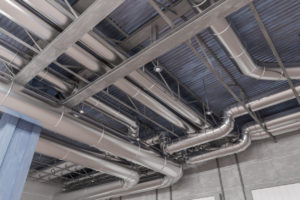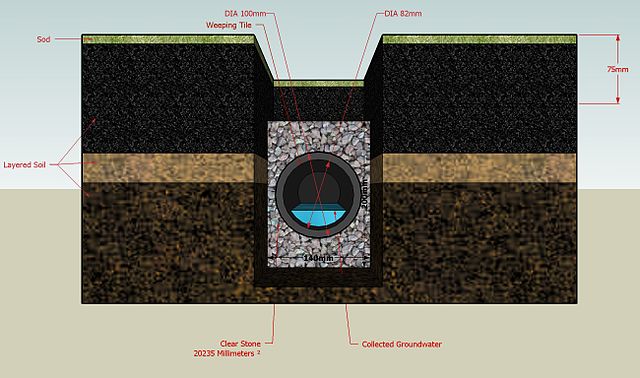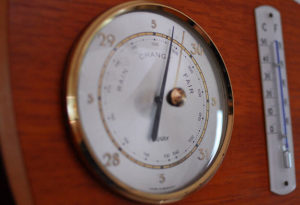HVAC EXPLAINED: A GLOSSARY OF HVAC TERMS
Jun 05, 2018
HVAC Terms Glossary
HVAC can be confusing – that’s why Newcomb and Company makes sure all of our technicians are certified through North American Technician Excellence, Inc. (NATE).
But when you’re trying to understand the basics of your HVAC system, you shouldn’t need a reference book. Just bookmark this page and you’ll know everything you need to know about HVAC, from dampers to air ducts.
Interior HVAC Components

AIR DUCT
An air duct is a pipe that conveys air throughout your home. Almost every air duct is located behind the walls or above the ceilings. The air duct and dampers are known as the “ductwork.”
DAMPERS
Dampers are located throughout your house, typically in the floors or ceilings. These are the ‘doorways’ that let heated or cooled air into the rooms. Dampers can be opened and closed manually; closed dampers are a common reason why a room may not be heating or cooling properly.
EVAPORATOR COIL
Refrigerant begins its journey in the evaporator coil. As it travels through the coil, it absorbs heat from the air passing over it and converts from a liquid to a gas.
EXHAUST FLUE
The exhaust flue pipe expels the exhaust and byproducts of combustion. Typically, furnaces have a fan or blower to propel the gases from your unit to the outdoors.
PLENUM
The plenum is essentially a holding cell for air that is being heated or cooled. Each air duct in your house may meet at a plenum, where the air can be recirculated and distributed.
RETURN VENT
Each air duct connects to a vent. Return vents take in air that needs to be conditioned. You won’t feel air coming out of a return vent since it isn’t blowing air back into the room.
SUPPLY VENT
Supply vents send the conditioned air back into the room. Unlike return vents, supply vents have dampers so you can control the flow of air to the air duct.
Exterior HVAC Components
COMPRESSOR
The air conditioner compressor draws in refrigerant and squeezes the molecules together to raise the temperature and pressure. From there, the refrigerant flows to the condenser.
CONDENSER
The condenser unit cools down the high-pressure, high-temperature refrigerant, converting it from a gas back to a liquid. It is typically located in the outside part of your HVAC unit.
CONDENSER COIL
Condenser coils are located inside the condenser. The high-pressure, high-temperature refrigerant travels through these coils, giving it time to lose heat and convert back to a liquid.
CONDENSER COIL FAN
The condenser fan blows air over the condenser coils to cool down the refrigerant.
CONDENSER FINS
Condenser fins are the grill-like part of the outdoor HVAC unit. They help release the heat that the air conditioner has removed from your home into the outside air.
CONDENSATION DRAIN LINE
The condensation drain is a tube that removes the moisture released when the evaporator converts the refrigerant from a liquid to a gas. The drain line directs this moisture out of your home. It should be cleaned regularly to avoid algae buildup.
DRAINAGE TRAY
The condensation tray, also called the drain tray, condensation tray, or drip tray, collects the water created during condensation and evaporation. Your drainage tray should not fill with water.
DRAIN VALVE
The drain valve controls the flow of water from the condensation drain line. When the drain line fills with water, the pressure from the condensate causes the valve to open so the line can drain. As the water drains, the pressure lessens and the drain valve closes.
FAN CAGE
The fan cage, also called a blower, squirrel cage fan, or centrifugal fan, houses a fan motor used to power the fan that blows the air over the condenser coils, speeding the process that converts the refrigerant from a gas to a liquid.
FAN MOTOR
The fan motor propels the fan that blows air over the condenser coils. This cool air keeps your unit from overheating and helps the refrigerant convert from gas to liquid more quickly.
GROUND SOURCE HEAT PUMP
A ground source heat pump (GSHP) or geothermal heat pump uses heat from the ground rather than the air to heat your home. They are more efficient and have lower operating costs than other types of HVAC units, but are pricier to install and repair.
Plumbing Terms
DRAIN FIELD
The drain field or leach field is the area of your yard where treated wastewater is deposited. A septic tank works by using bacteria to break down waste. Treated water flows into the drain field pipe, which has holes in it so the water can seep into the drain field.
FILL VALVE
The fill valve opens to refill the tank after you flush it. If there’s water under the toilet tank, it may be due to a poorly sealed fill valve.
FLUSH VALVE
The flush valve is located at the bottom of your toilet tank. When the toilet is flushed, a chain lifts up the flush valve so the water can drain.
FRENCH DRAIN
A French drain is a type of drainage solution that helps to keep water from damaging the foundation of a building. A French drain is a trench filled with gravel or stones, which redirects the water (often via a pipe) away from sensitive areas. They are commonly used in septic drain fields. Learn more about how to install a French drain.

INSULATION BLANKET
An insulation blanket is used to prevent heat from escaping from appliances like a hot water heater. They can be purchased at most hardware stores. It is used to prevent heat from escaping from appliances like a hot water heater. You can install an insulation blanket yourself.
STACK PIPE
The stack pipe vents sewer gases from your waste pipes into the outside air, so any unpleasant odors don’t linger around your living area. Since a stack pipe goes directly from your plumbing to the top of your house, animals can use it to make their way into your plumbing.
T&P VALVE
The T&P valve, also called the temperature and pressure valve or the relief valve, isn’t used in everyday practice. The T&P valve is there in case the temperature or the pressure reaches a critical point, at which point the T&P valve will open and release hot water and steam to relieve the problem. A leaky T&P valve is one of the most common water heater issues.
General Terms
DUAL FUEL
A dual-fuel HVAC system uses both an electric heat pump and a gas furnace to heat and cool your home as efficiently and effectively as possible. They are 20-25% more expensive to install than a typical air conditioning unit, but the costs can pay for themselves if you live in a cooler climate.
ENERGY STAR®
Products with ENERGY STAR certification meet strict criteria set by the EPA and/or the Department of Energy. They function as well as or better than other products, but are more energy efficient investments. Several types of heating and cooling devices can obtain the ENERGY STAR certification.
HEAT EXCHANGER
A heat exchanger is any system that removes heat from one substance and adds it to another, without any direct contact between the substances. There are many examples of heat exchangers. Air conditioners act as heat exchangers because they remove the heat from the air in your home and release it into the outdoor air.
HEAT PUMP COIL
The evaporation and condensation coils in your HVAC unit or heat pump are collectively referred to as the heat pump coils.
HYGROMETER

A hygrometer measures the humidity in your home.
MERV RATING
Air filters are given minimum efficiency reporting value ratings, or MERV ratings. This measures how effective the filter is. Ratings range from 1 to 16, with higher ratings indicating a denser filter that can catch smaller particles. Learn more about which air filter you need.
NATE CERTIFICATION
North American Technician Excellence, Inc. offers a series of tests that allow HVAC technicians to gain NATE certification indicating that they are competent in a certain area, such as air conditioning, commercial refrigeration, heat pumps, gas heating, and more. This certification is the industry standard.
REFRIGERANT
Refrigerant travels through your HVAC system, absorbing or releasing heat into your home so the air is either cooled or heated. There are several types of refrigerant.
WINDOW WELL
Many basements and crawlspaces have vents or windows. These openings are surrounded by metal window wells to keep water from entering your home. A defective window well can act as a drain, funneling water into your home. It’s one of the most common causes of water in the basement or crawlspace.
ZONING
A zoned HVAC system uses multiple thermostats so you can adjust the temperature in different rooms of your home. A zoned system opens and closes the air duct dampers according to your settings.
Contact Newcomb & Company | HVAC Service in Raleigh
Have any other HVAC or Plumbing questions or concerns, Contact Newcomb and Company for HVAC Service in Raleigh or Wilmington today!
Need help? Call now.